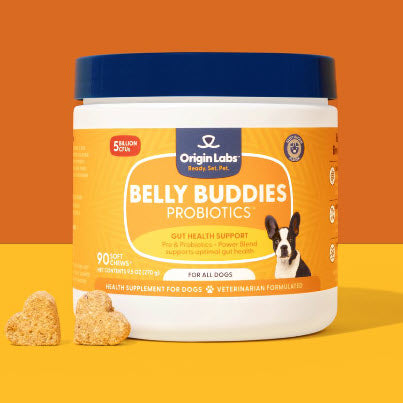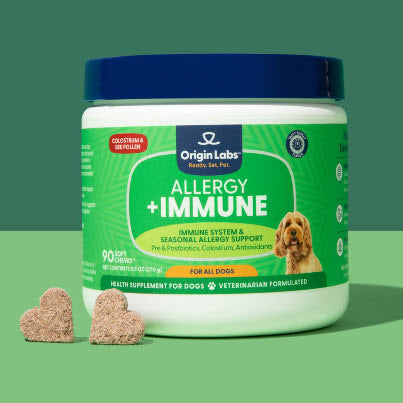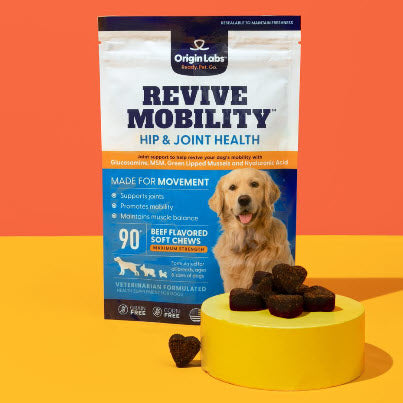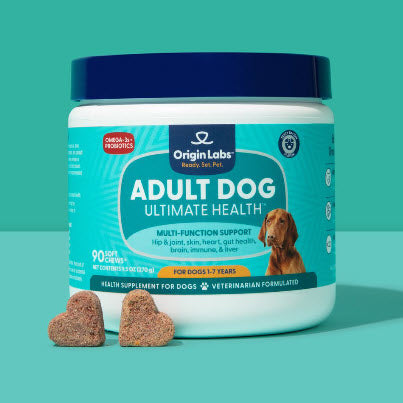Introduction
Many pet owners wonder: can dogs eat pumpkin? This colorful fall vegetable is not only popular with humans but also has potential health benefits for dogs. Pumpkin can be a nutritious addition to a dog's diet, providing important vitamins and minerals. It's crucial to feed our furry friends a balanced diet to keep them healthy, which includes supporting their digestion and maintaining their coat's shine. In this article, we'll explore the advantages and things to keep in mind when incorporating pumpkin into your dog's meals.
The Nutritional Benefits of Pumpkin for Dogs
When it comes to pumpkin nutrition, this humble squash is a veritable powerhouse. Packed with a variety of vitamins and minerals, pumpkin can provide a significant boost to your dog's overall health.
One of the primary nutritional benefits of pumpkin is its high fiber content. Fiber plays a crucial role in the digestive process, helping to regulate bowel movements and maintain a healthy digestive tract. For dogs, this can translate into an easier time passing stools and fewer instances of constipation or diarrhea.
In addition to fiber, pumpkins are loaded with beneficial vitamins and minerals that are essential for your dog's well-being. According to a study published in the National Center for Biotechnology Information, these include:
- Vitamin A: Vital for vision, growth, and immune function
- Vitamin C: Contributes to collagen synthesis for healthy skin, joints, and blood vessels
- Vitamin E: Acts as an antioxidant to protect cells from damage
- Potassium: Important for nerve function, muscle health, and maintaining fluid balance
- Iron: Essential for oxygen transportation in the blood
Furthermore, when considering which vegetables are good for dogs, it's worth noting that pumpkin is among the top choices according to Dr. Harvey's, a renowned provider of natural pet foods. They recommend incorporating pumpkin into your dog's diet due to its various health benefits.
While these nutrients make pumpkin a healthy addition to any dog's diet, it's still important to remember that moderation is key. Even though pumpkins have numerous health benefits, they should only be considered as part of a balanced diet for dogs, not as a complete food source. This is why reputable pet food brands like Blue Buffalo also include pumpkin in some of their recipes, as it complements the overall nutritional value of the food.
Is Pumpkin Safe for Dogs?
Yes, pumpkin is generally safe for dogs to consume. However, there are some important safety considerations to take into account.
Feeding the Right Parts of the Pumpkin:
Not all parts of the pumpkin are safe for dogs. While the flesh of a pumpkin is full of beneficial nutrients, certain parts can pose potential hazards. The stem and leaves of a pumpkin plant can be tough and sharp, potentially causing internal damage if ingested. Additionally, the skin of a pumpkin is very hard and can be difficult for dogs to digest.
Choosing the Right Type of Pumpkin:
When choosing a pumpkin product for your dog, it's imperative to select one that is free from additives. Some canned pumpkins, particularly those intended for pie filling, contain spices like nutmeg and cinnamon which are not suitable for dogs. Make sure any canned or puree products chosen are 100% pumpkin with no added ingredients.
Monitoring Quantity:
Like any food, it's important to monitor the quantity of pumpkin your dog consumes. While pumpkin offers many nutritional benefits, excessive consumption can lead to diarrhea due to its high fiber content.
Consulting with a Veterinarian:
Before integrating pumpkin into your dog's diet on a regular basis, it's always advisable to consult with a veterinarian. They can provide personalized advice based on your dog's specific dietary needs and health condition.
Note: While raw pumpkin isn’t necessarily harmful, cooked or canned 100% pure pumpkin is easier for dogs to digest.
Remember that whenever introducing new foods into your dog’s diet, it should be done gradually to avoid digestive upset. A sudden change in diet can lead to gastrointestinal issues such as diarrhea or vomiting. In relation to the safety of feeding pumpkin to dogs and potential hazards of pumpkin for dogs, these guidelines should be adhered to ensure your pet's health and safety.
Treating Digestive Issues with Pumpkin
Pumpkin is often hailed as a superfood for dogs, especially when it comes to digestive health. Its high fiber content is a key player in promoting healthy bowel movements in dogs, acting as both a bulk-forming laxative and a tool for firming up loose stools.
For Dog Constipation
When a dog is suffering from constipation, introducing dog constipation pumpkin to their diet can be a gentle and effective remedy. The soluble fiber in pumpkin absorbs water and adds bulk to the stool, making it easier for a dog to pass. For these cases:
- Start with small amounts of plain, canned pumpkin
- Gradually increase based on your dog’s size and response
- Ensure adequate hydration, since fiber works best with sufficient water intake
For Dog Diarrhea
Conversely, dog diarrhea pumpkin treatments hinge on the same fiber to help solidify stools. The soluble fiber forms a gel-like consistency that can soothe an irritated digestive tract. To aid dogs with diarrhea:
- Introduce canned or cooked pumpkin in small servings
- Monitor stool consistency and adjust portion size accordingly
- Avoid overfeeding as too much pumpkin can exacerbate diarrhea
Preventing Anal Gland Issues
Regular, firm bowel movements are crucial for the natural expression of a dog's anal glands. When these glands are not properly emptied, discomfort and potential infection can occur. Pumpkin's fibrous makeup helps create the optimal stool consistency to prevent such complications.
For general maintenance and prevention of anal gland issues:
- Incorporate a consistent amount of pumpkin into your dog’s diet
- Observe your dog’s bowel habits and adjust as needed
- Check with your vet if anal gland problems persist despite dietary adjustments
By including the right amount of pumpkin in your dog's diet, you're not just addressing current digestive issues but also taking proactive steps toward their overall gut health. Remember that each dog reacts differently to dietary changes; what works for one might not work for another. Observations paired with veterinary guidance will ensure that pumpkin serves as an ally in maintaining your pet's digestive well-being.
Feeding Pumpkin to Dogs: Best Practices and Precautions
Feeding pumpkin to dogs requires some attention to ensure the health and comfort of your furry friend.
Feeding Guidelines for Dogs
When giving pumpkin to your dog, remember these key points:
- Moderation is key: Pumpkin should not replace a balanced diet but can serve as a healthy supplement.
- Start small: Begin by introducing small amounts, approximately one to two teaspoons for smaller dogs, or one to two tablespoons for larger breeds. This slow introduction helps prevent digestive upset.
Introducing Pumpkin to Dog's Diet
Here are some tips on how to incorporate pumpkin into your dog's diet:
- Mix it in: Adding pumpkin to a dog's meal can be as simple as mixing it into their regular food.
- Start slow: Start with a small amount and gradually increase over time. This will allow your pet's digestive system time to adjust.
- Watch for changes: Monitor your pet closely for any changes in their bowel movements or signs of discomfort.
Canned vs. Fresh Pumpkin for Dogs
Choosing between canned and fresh pumpkin options largely depends on convenience and availability.
Canned Pumpkin
Canned pumpkin is often the easiest option, especially during the off-season when fresh pumpkins are not readily available. Make sure the canned product is plain pumpkin without any added ingredients like sugar, spices or preservatives that could harm your dog.
Fresh Pumpkin
If you prefer fresh pumpkin, ensure it is properly prepared:
- Remove the skin, stems, and seeds: These parts can be tough for dogs to digest.
- Cook it thoroughly: Cooking the pumpkin makes it easier for your dog to digest.
- Choose pureed or mashed: Once cooked, you can puree or mash the pumpkin and add it directly into your dog’s meals.
Consider these guidelines when planning to introduce pumpkin into your dog's diet. Remember, every dog is different, so what works for one may not work for another. As always, consult with your vet before making any significant dietary changes.
Creative Ways to Feed Pumpkin to Your Dog
Pumpkin is packed with nutrients and can be a great addition to your dog's meals in fun and creative ways. Its mild taste and smooth texture make it perfect for making homemade dog food and treats.
1. Use It as a Food Topper
One simple yet effective way to add pumpkin to your dog's meals is by using it as a food topper. Just put a spoonful of canned or freshly cooked pumpkin puree on top of their regular food. This not only adds some color but also gives them a healthy boost of fiber and essential vitamins. The best part? You don't have to change their usual diet too much!
2. Make Homemade Pumpkin Treats
Let's not forget about the versatility of pumpkin when it comes to making tasty treats for your furry friend. Here are a few ideas:
- Pumpkin Dog Biscuits: Combine whole wheat flour, eggs, and pumpkin puree to make a dough. Roll it out, cut into shapes using a cookie cutter, and bake until crisp. These wholesome biscuits will definitely be a hit with your pet.
- Pumpkin and Peanut Butter Treats: If your dog loves peanut butter, mix it with pumpkin puree and oats to create a thick mixture. Roll into small balls or use silicone molds for fun shapes, then freeze. The result? Nutritious and delicious chewy treats!
- Pumpkin Ice Pops: Blend together pumpkin puree, plain yogurt, and a touch of honey. Pour the mixture into an ice cube tray and freeze. These refreshing ice pops are perfect for those hot summer days!
Remember, these treats should be given in moderation as part of a balanced diet.
The versatility of pumpkin allows for countless possibilities when it comes to feeding it to your dog. Whether you're using it as a nutritious food topper or getting creative with homemade pumpkin dog treats, one thing is for sure: mealtime will never be boring with this superfood!
Other Pet-Safe Vegetables for Your Dog to Enjoy
While pumpkin is a fantastic addition to your dog's diet, there are many other vegetables that are safe for pets and offer a wide range of nutritional benefits. Adding these alternative vegetables to your dog's meals can not only improve their health but also make their meals more interesting.
The Benefits of Including Different Vegetables in Your Dog's Diet
A varied diet has several advantages for your dog:
- Preventing Boredom: Just like humans, dogs can get bored with eating the same food every day. Introducing different vegetables can make their meals more exciting and enjoyable.
- Providing Essential Nutrients: Each vegetable contains its own combination of vitamins, minerals, and fiber that are beneficial for your dog's overall health. These nutrients support functions such as the immune system, digestion, and skin health.
- Promoting Balance: By offering a variety of vegetables, you can ensure that your dog receives a balanced intake of nutrients from different sources.
Pet-Safe Vegetables and Their Benefits
Here is a list of some excellent veggie options that are safe for dogs along with their key nutritional benefits:
- Broccoli: This cruciferous vegetable is high in vitamin C and fiber. It also contains vitamin K, which supports strong bones. Offer it to your dog in small quantities to avoid gastric irritation.
- Carrots: Carrots are low in calories and high in fiber and beta-carotene, which converts to vitamin A and promotes good vision, immune health, and skin integrity.
- Sweet Potatoes: Another low-fat option rich in dietary fiber. Sweet potatoes are also packed with vitamin A and provide antioxidants that help ward off diseases.
- Leafy Greens: Vegetables like spinach and kale are nutrient-dense, offering vitamins A, C, E, and K as well as calcium for healthy bones. They're also rich in antioxidants.
Remember to Introduce New Foods Gradually
When introducing new vegetables into your dog's diet:
- Start with small amounts to see how your dog reacts.
- Monitor for any signs of digestive upset or allergies.
- If everything goes well, you can gradually increase the portion size and frequency.
Embrace Diversity in Your Dog's Diet
Just like humans benefit from eating a variety of fruits and vegetables, dogs can also thrive with a diverse diet. By rotating through different pet-safe vegetables, you're helping to round out your dog’s nutrition profile.
"Diversity in food leads to diversity in gut bacteria, which is beneficial for overall health." - Dr. Jennifer Adolphe, PhD, RD
By considering these additional pet-safe vegetables as supplements or occasional treats in your dog's diet, you can enjoy the peace of mind that comes with providing a nutritious and balanced diet tailored to their needs.
In Summary
Pumpkin offers a wealth of nutritional benefits for dogs, from high fiber content aiding digestion to a rich supply of essential vitamins and minerals. However, the inclusion of pumpkin or any new food into a dog's diet should be a careful process. It's vital to:
- Consult a veterinarian before introducing pumpkin into your dog's meals, especially if your pet has existing health concerns or dietary restrictions.
- Opt for plain canned pumpkin or freshly cooked pumpkin, steering clear of any additives that could be harmful to your furry friend.
- Start with small amounts to ensure your dog tolerates pumpkin without experiencing digestive upset.
Responsible feeding practices go a long way in maintaining the health and happiness of dogs. Introducing a variety of safe vegetables like broccoli, carrots, sweet potatoes, and leafy greens can contribute positively to their well-being. Remember to maintain diversity in their diet and always practice moderation to avoid potential issues.
Feeding dogs pumpkin can be an excellent addition to their diet when done correctly. By adhering to these guidelines and seeking professional advice, you'll be ensuring that every tail wag comes from a place of well-being and joy.
FAQs (Frequently Asked Questions)
Can dogs eat pumpkin?
Yes, dogs can eat pumpkin. It is a safe and nutritious addition to their diet when fed in moderation.
What are the nutritional benefits of pumpkin for dogs?
Pumpkin is rich in fiber, vitamins, and minerals that can benefit a dog's digestive system and overall health. The high fiber content can help with digestion and promote healthy bowel movements.
Is pumpkin safe for dogs?
Feeding pumpkin to dogs is generally safe, but certain parts of the pumpkin plant can pose hazards. It's important to consult with a veterinarian before making any dietary changes for your dog.
How can pumpkin help treat digestive issues in dogs?
Pumpkin can be used to help treat digestive issues such as constipation or diarrhea in dogs. It can also promote healthy bowel movements and prevent anal gland issues.
What are the best practices for feeding pumpkin to dogs?
It's best to introduce pumpkin gradually into a dog's diet to avoid digestive upset. Additionally, choosing between canned and fresh pumpkin options should be based on the specific dietary needs of the dog.
What are some creative ways to feed pumpkin to your dog?
There are many creative ways to incorporate pumpkin into your dog's meals, such as using it as a food topper or including it in homemade dog treat recipes. These methods can provide added nutrition and variety to your dog's diet.
What are some other pet-safe vegetables for dogs to enjoy?
In addition to pumpkin, there are other pet-safe vegetables that dogs can enjoy, such as broccoli, carrots, sweet potatoes, and leafy greens. Introducing a variety of vegetables into a dog's diet can provide nutritional benefits, but it's important to do so in moderation and with diversity.
What is the importance of consulting with a veterinarian regarding dogs eating pumpkin?
It is crucial to consult with a veterinarian before incorporating pumpkin or any dietary changes into your dog's diet. Veterinarians can provide personalized guidance based on your dog's specific health needs and ensure responsible feeding practices.








